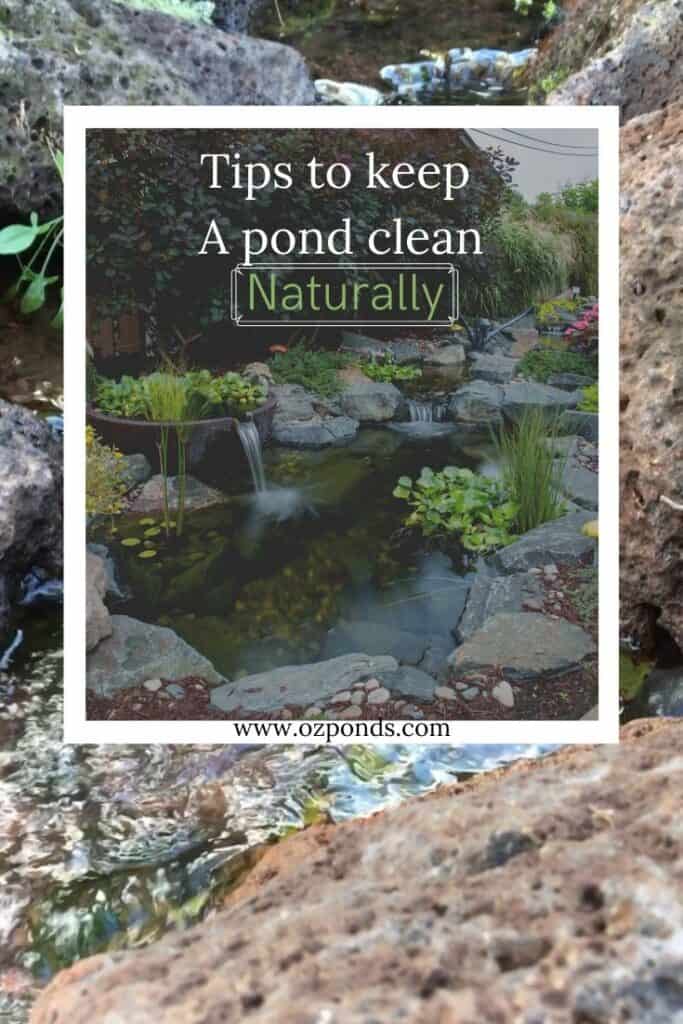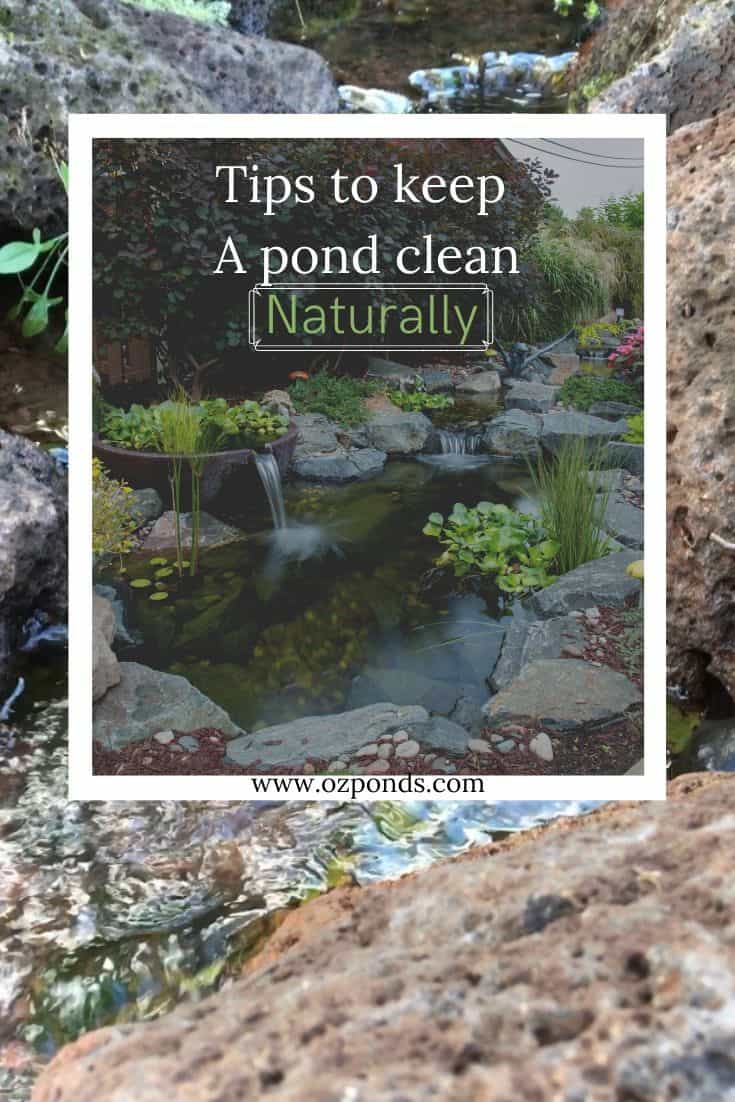There are a number of reasons that a pond can become dirty. Keeping the water crystal clear and the bottom sludge free can seem impossible!
However it’s actually quite easy to keep a pond clean naturally provided you take a few things into consideration.
Understand the nitrogen cycle.
A healthy population of nitrifying bacteria is a necessity if you want to keep your pond clean naturally. These beneficial bacteria form the backbone of the nitrogen cycle.
The nitrogen cycle is a natural cycle that occurs in all healthy water bodies from fish tanks & ponds to large lakes, rivers and streams.
The basic gist of the nitrogen cycle is that: fish poo and leaf matter (basically anything decomposing) will release the chemical ammonia into the water.
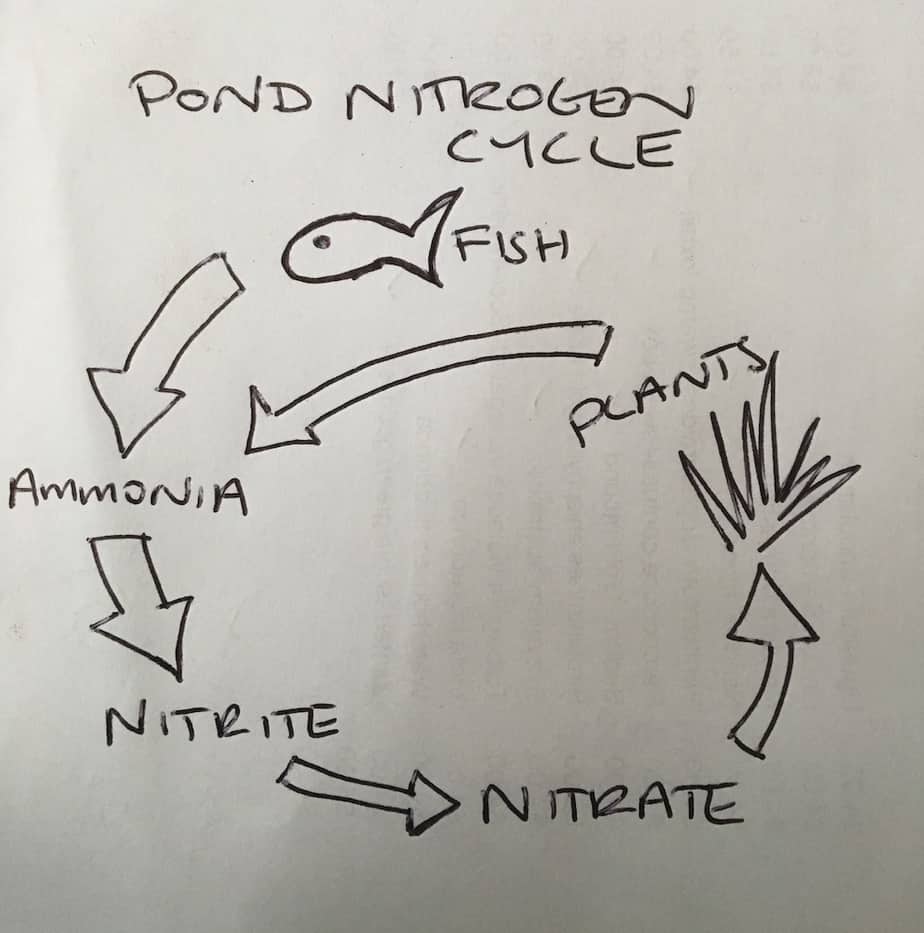
Healthy bacteria living within the water converts this ammonia into nitrite. Then another form of healthy bacteria converts the nitrite into nitrate. For a more detailed explanation on the nitrogen cycle click here.
These bacterias and micro-organisms require 2 things to thrive:
- Surfaces that they can grow on. The more surfaces the more nitrfying bacteria your pond will have. Rocks, pebbles and plant roots provide the most natural surfaces for the bacteria. You can also add specific materials to your filter to boost surface area such as ceramic noodles, bioballs or even course sponges.
- Oxygen. Adding plenty of oxygen into the water will supercharge the bacteria. Which means they can process more waste faster. Resulting in pristine water quality. Water that is safe for the fish, but also crystal clear.
Nitrates in the water will be the byproduct of the completed nitrogen cycle. In an aquarium the nitrate is removed via water changes.
Nitrate will be constantly produced in any healthy pond (due to the nitrogen cycle). Because nitrate is a plant food it can easily feed algae blooms within a pond.
Therefore the best way to consume this nitrate that is consistently being produced is to add aquatic plants.
Adding plants.
Aquatic plants will help consume nitrate within the water therefore competing with the algae.
Small amounts of algae should be present in any healthy pond! We just want to avoid it taking over and making the pond look unsightly.
Algae also needs sunlight to thrive. Adding floating plants, such as water lilies will shade the water. Aiming to shade 30-50% of the pond will go a long way to preventing algal blooms.
Larger marginal plants like tassel cord rush can help provide some shade on the shallow edges of the pond. Shallow areas are generally warmer and more conducive to growing algae.
Of course plants drop dead leaves and debris into the water that will begin to decompose and thus produce ammonia, then nitrite and of course more nitrate.
This is where physically removing the dead leaves and even some living plants can be of great benefit.
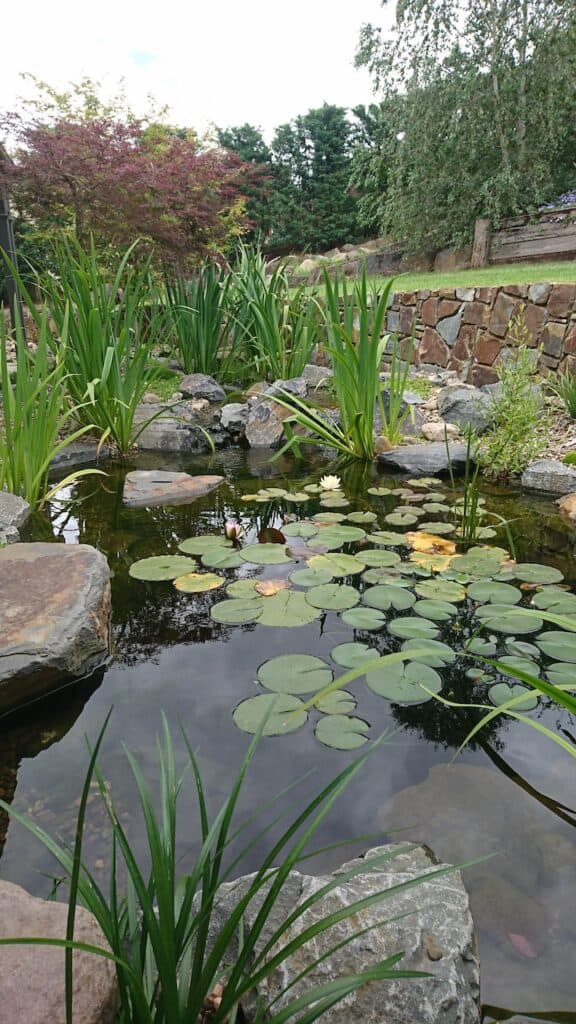
Removing plant matter
This is the most effective way to remove nitrate from the pond. This can either be by removing living plant growth (pruning and thinning out the margiinal plants) or by removing decomposing matter.
See when the plant grows it absorbs the nitrate. If we remove that foliage or leaf litter we remove the nitrate that has been stored within.
By removing the organic plant material before it breaks down, we stop the release of more ammonia. Thus effectively slowing the release of nutrients in the water.
Now there are a number of ways this can be done.
In large ponds the best way is to use a pond skimmer. This is simply a box that will house the pump and draw all the water through a small opening.
By drawing the water it creates a current and brings all floating debris into the skimmer.
In small ponds it may be more effective to manually remove leaf litter and excess plant growth. Using a pond vacuum or pool net is the easiest way.
In autumn you might want to cover the pond with a pond net to capture the leaves before they land in the pond. Also in autumn trim off all the foliage on the water lilies within the pond.
Fish
Fish are very beneficial to helping keep a pond clean. They will stir up the bottom of the pond allowing the small particles to float into the skimmer or passed through the pump and into the filter.
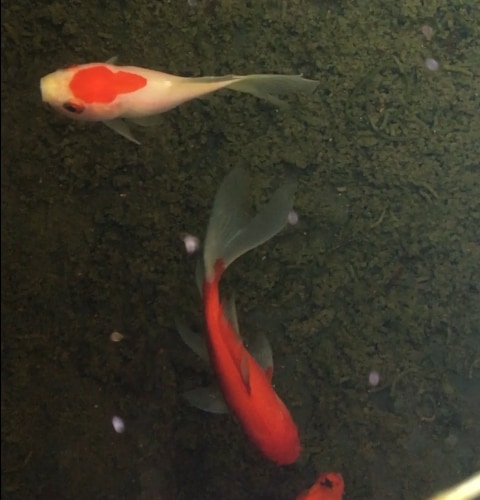
Of course fish will also add more ammonia into the pond.
Keeping fish numbers at sensible levels will greatly help in keeping the pond clean. Overstocked ponds will often turn pea soup green.
This is because there is so much micro algae growing within the water due to the nutrients that are available.
You can read more about how many fish you should stock in a pond here.
I like to have a diverse range of fish and even invertebrates in a pond to really round out the ecosystem. Shrimp and fresh water mussels are really cool!
Adding a wetland or Bog
In my opinion this is easily the best thing you can do to help ensure you have a pond that stays clean naturally.
Wetlands and bogs are really effective in a number of ways.
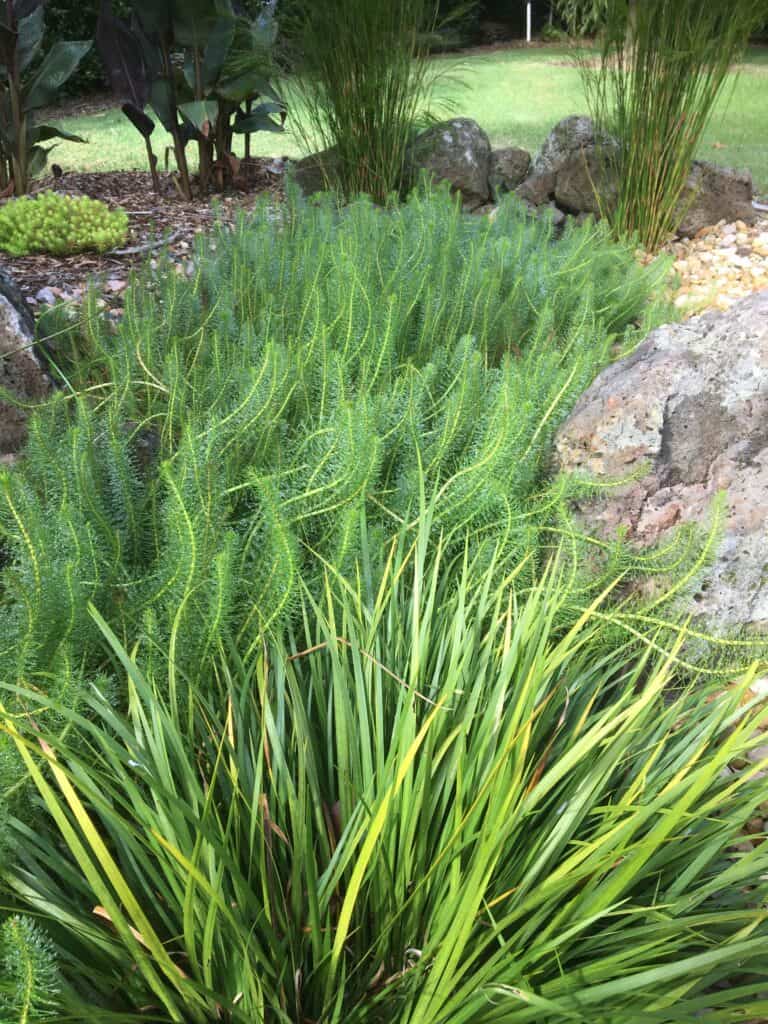
Firstly they contain a large amount of surface area. The rocks within the wetland or bog are a breeding ground for the beneficial bacteria.
I mentioned at the start of this article, the more the merrier when it comes to beneficial bacteria.
Secondly the bog or wetland can be planted with large numbers of plants. Thus it’s a great place for the majority of your planting as it won’t impact on the amount of open water the pond has.
Not to mention the dead leaves will not fall into the open water and decompose. Hence all those nutrients have been captured and removed from the pond.
Thirdly bogs and wetlands slow the water down. Allowing more time for the beneficial bacteria to work its magic.
Another benefit of the slowed water velocity is it allows solids (like fish poo), that are within the water to accumulate within the wetland or bog as opposed to your beautiful clean pond.
Here they can be consumed by the plants or pumped out onto the surrounding gardens. Bog and wetland filters require very little if any human intervention.
You can read more about adding a bog/ wetland to your pond here. These can be used on both big and small ponds.
Below you can watch a video showing what happened when i added a bog filter to my 1000L (264gal) goldfish pond.
Subscribe
If you haven’t already make sure to subscribe to my email list. I often receive special discounts and offers from pond suppliers.
I love a good deal and am always looking to save money while i build more and more ponds.
